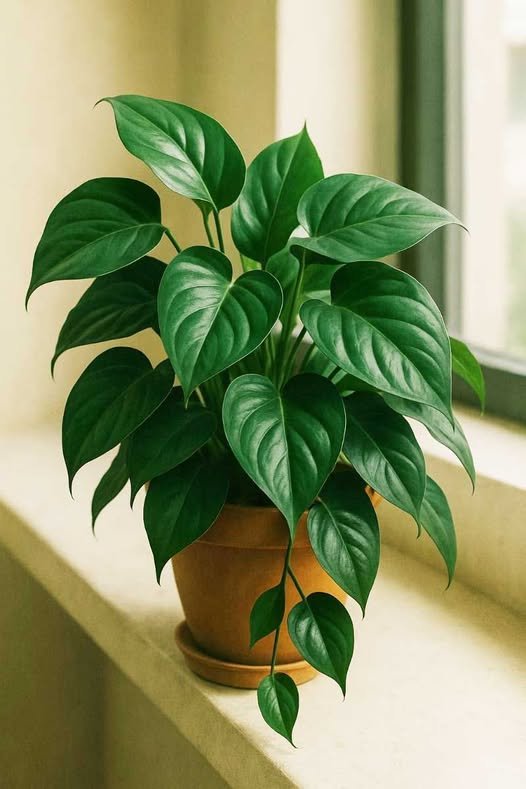Watering plants is a fundamental aspect of gardening, yet the timing of this task can significantly impact the health and growth of your plants. Many gardeners, both novice and experienced, often water their plants at night, believing it to be a convenient and effective practice. However, this seemingly harmless habit can have detrimental effects on plant health.
Understanding the best time to water your plants is crucial for ensuring their vitality and longevity. This article explores why nighttime watering is not ideal, delves into the science behind plant watering, and offers practical advice on the best practices for keeping your plants healthy and thriving.
1. Why Watering at Night Is a Common Practice
Watering plants at night is a common practice primarily due to convenience. Many people find it easier to water their gardens after work or during the cooler evening hours when the sun is not scorching. This timing also aligns with the belief that watering at night reduces evaporation, allowing more water to penetrate the soil and reach the roots.
Additionally, some gardeners assume that watering at night mimics natural rainfall patterns, which often occur in the evening or overnight. This assumption leads to the belief that nighttime watering is more natural and beneficial for plants. However, these reasons, while logical, overlook the potential risks associated with watering during the cooler, darker hours.
2. The Science Behind Plant Watering
Plants require water for photosynthesis, nutrient transport, and maintaining cell structure. During the day, plants undergo transpiration, a process where water evaporates from the leaves, creating a negative pressure that draws water and nutrients from the roots. This process is most efficient when the sun is out, as the warmth and light facilitate the opening of stomata, the tiny pores on leaves.
Watering during the day, particularly in the morning, aligns with the plant’s natural processes. It ensures that water is available when the plant is actively transpiring and photosynthesizing, promoting optimal growth and health.
3. Risks of Watering Plants at Night
Watering plants at night can lead to several risks, primarily due to the prolonged moisture on leaves and soil surfaces. When water sits on plant leaves overnight, it creates a humid environment that is conducive to the growth of fungi and other pathogens. This can lead to diseases such as powdery mildew and root rot.
Moreover, cooler nighttime temperatures slow down the evaporation process, meaning the soil remains wet for longer periods. This can suffocate roots and reduce oxygen availability, further stressing the plant and potentially leading to root diseases.
4. How Nighttime Watering Can Lead to Fungal Growth
Fungal spores thrive in moist, dark environments, making nighttime watering a perfect setup for their proliferation. When leaves remain wet overnight, fungi such as powdery mildew and downy mildew can easily take hold. These fungi can spread rapidly, covering leaves with unsightly white or gray patches and ultimately hindering photosynthesis.
In addition to foliar diseases, overly moist soil can encourage the growth of soil-borne fungi like Pythium and Phytophthora, which cause root rot. These pathogens attack the roots, leading to wilting, yellowing, and eventual plant death if not addressed promptly.
5. The Impact of Nighttime Watering on Plant Health
Nighttime watering can have long-term detrimental effects on plant health. Persistent exposure to fungal diseases weakens plants, reducing their ability to photosynthesize and grow effectively. Over time, this can lead to stunted growth, poor flowering, and reduced yields in fruiting plants.
Additionally, constant root stress from waterlogged soil can weaken the plant’s overall structure, making it more susceptible to other environmental stresses such as drought, pests, and temperature fluctuations. Ensuring proper watering practices is essential for maintaining robust and resilient plants.
6. Common Misconceptions About Nighttime Watering
One common misconception is that watering at night conserves water by reducing evaporation. While it’s true that less water evaporates in cooler temperatures, the risks associated with prolonged leaf wetness and soil saturation often outweigh this benefit.
Another misconception is that nighttime watering helps plants recover from the day’s heat. However, plants primarily recover through transpiration and photosynthesis, processes that are most active during daylight hours. Watering in the morning supports these natural recovery mechanisms more effectively.
7. The Best Time to Water Your Plants
The best time to water your plants is early in the morning, ideally between 6 a.m. and 10 a.m. This timing allows water to soak into the soil and reach the roots before the heat of the day increases evaporation rates. Morning watering also ensures that leaves dry quickly, reducing the risk of fungal diseases.
If morning watering is not possible, late afternoon is the next best option. However, it’s important to ensure that leaves have time to dry before nightfall to prevent moisture-related issues.
8. How Morning Watering Benefits Plant Growth
Morning watering aligns with the natural rhythms of plant growth. As the sun rises, plants begin photosynthesizing and transpiring, processes that require ample water. By watering in the morning, you provide the necessary hydration for these critical functions, supporting healthy growth and development.
Additionally, morning watering helps to regulate plant temperature. As water evaporates from the soil and leaves, it cools the plant, reducing heat stress and promoting a more stable growth environment.
9. Tips for Efficient Watering Practices
To water your plants efficiently, focus on delivering water directly to the root zone. Use soaker hoses or drip irrigation systems to minimize water waste and ensure even distribution. Water deeply but infrequently, allowing the soil to dry out slightly between waterings to encourage deep root growth.
Monitor soil moisture levels regularly to avoid overwatering. A simple way to check is by inserting your finger into the soil up to the second knuckle; if it feels dry, it’s time to water. Adjust your watering schedule based on weather conditions, plant type, and soil drainage characteristics.
10. Popular Viral Hacks for Watering Plants
Several viral hacks for watering plants have gained popularity, such as using self-watering spikes or repurposing plastic bottles to create slow-release watering systems. These methods can be effective for maintaining consistent moisture levels, especially for potted plants or during periods of absence.
Another popular hack is using a moisture meter to take the guesswork out of watering. These devices provide real-time feedback on soil moisture levels, helping you determine when your plants truly need water, thus preventing over- or under-watering.
11. What to Do If You Must Water at Night
If you must water your plants at night, take steps to minimize the risks. Water the soil directly, avoiding the leaves, to reduce the chance of fungal growth. Use a watering can with a narrow spout or a drip irrigation system to target the root zone.
Ensure good air circulation around your plants to help leaves dry faster. Prune dense foliage and space plants appropriately to promote airflow. Consider using mulch to retain soil moisture and reduce the frequency of watering, especially during dry spells.



